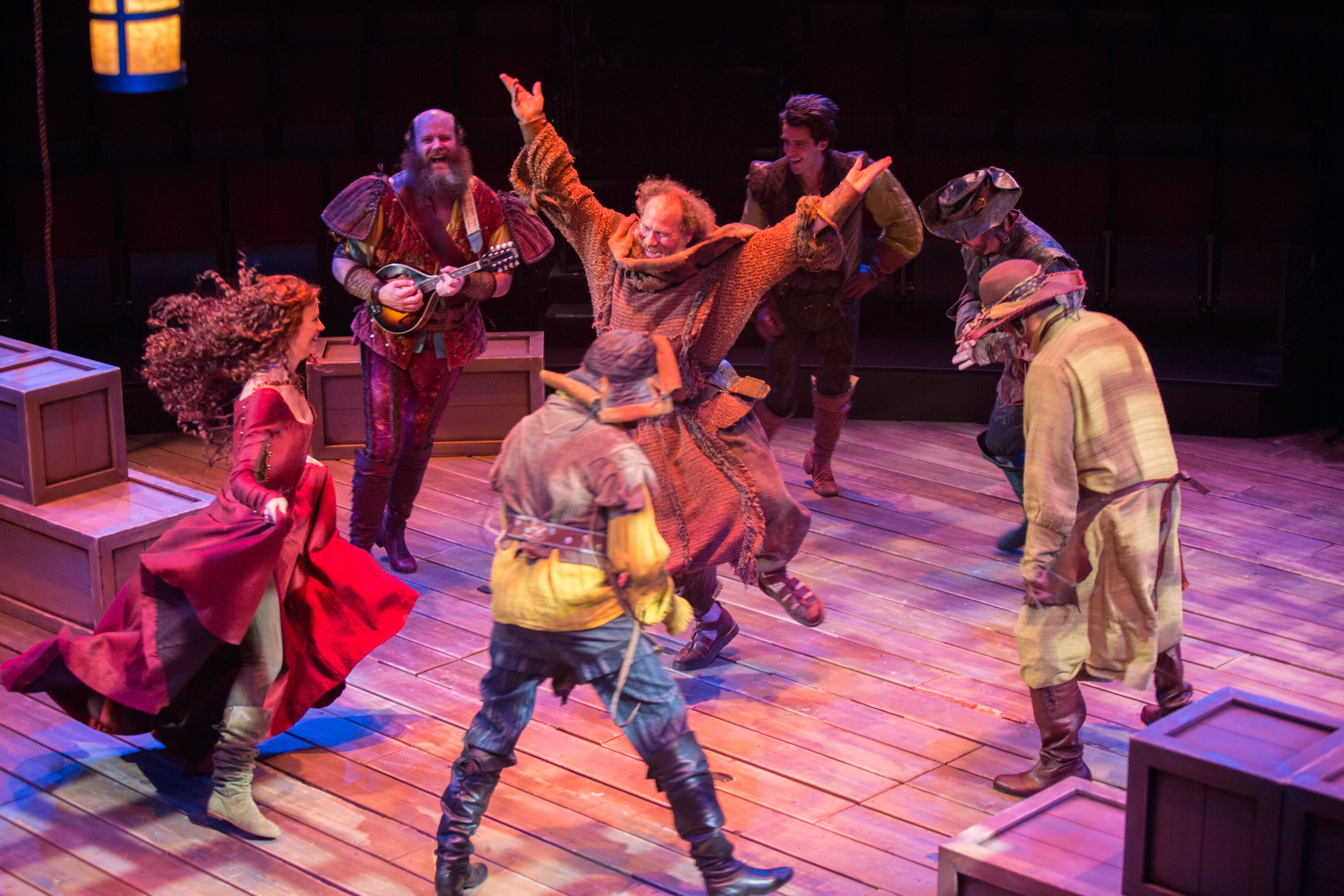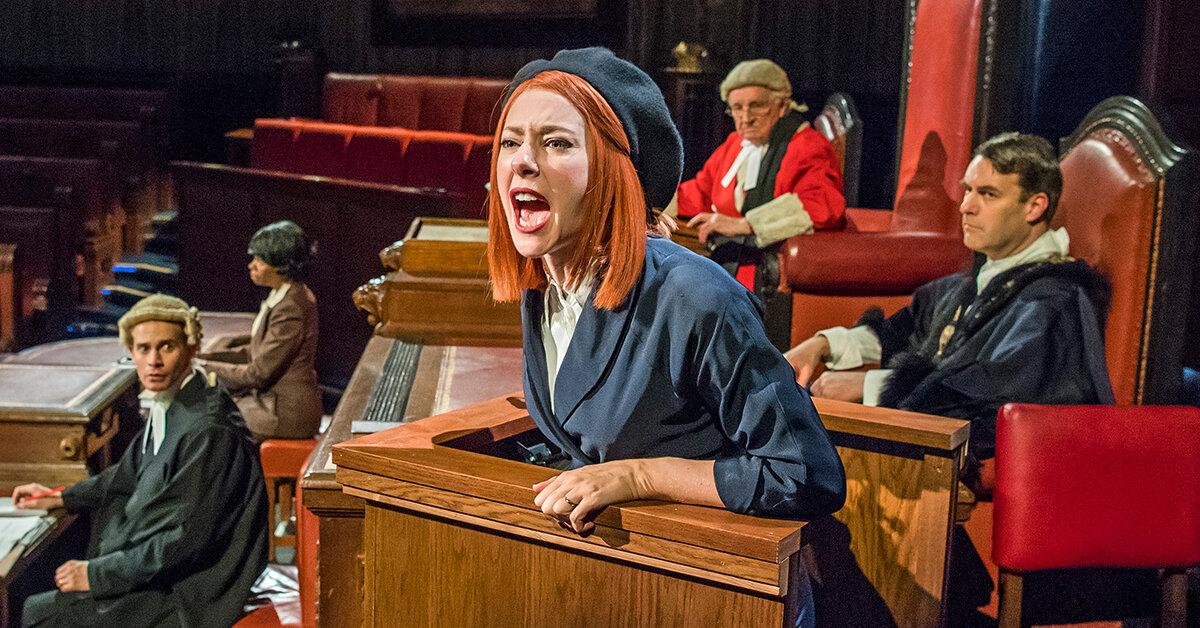
Originally published on their website, the Old Globe’s Literary Manager and Dramaturg, Danielle Mages Amato, chats with playwright Ken Ludwig about the 2017 world premiere of his newest play Robin Hood!
Why Robin Hood? What drew you to this character as the subject for a play?
I’ve wanted to write a Robin Hood play for ages. When I sat down and started to write this version, I looked back at my notes from years past and it was startling – I have Robin Hood books in my library with annotations going back 10 years. So I asked myself, what is it that viscerally attracts me to this this character and this story, and I think the answer is that Robin and his friends really stand for something. It’s a story about social justice. And compassion. And the need to help those who are less fortunate. The choice these characters make – to roll up their sleeves and help others, voluntarily and without motive for gain – touched me more deeply than I knew. Plays are written on instinct – I suppose all literature is written that way – and my instinct for years has been that this is an important story to tell.
Robin Hood is often synonymous with adventure. Did that element affect your interest in the story?
Absolutely. The adventure, the romance, and the insistent heartbeat that sounds through all the Robin Hood tales. And like most romantic adventure stories, the legend of Robin Hood is a comedy at heart. If you look back at the origins of the legend – to the 14th and 15th century ballads – you see story after story with the same pattern: Robin Hood gathers a group of friends to his side, and they triumph over their enemies who have unjustly assumed political power. Sometimes these enemies are the Prince and the Sheriff – that is, the political establishment itself – and sometimes these enemies are the butchers and bakers who have sided with the establishment. But in virtually all the ballads, Robin Hood wins the day and the tale ends happily. Over the years I’ve come to believe that this is the very definition of comedy: a story with a happy ending. Or, in a more sophisticated sense, a story that creates an environment where happy endings are inevitable. Another way of thinking about comedy is that it’s often the story of an underdog who triumphs in the end. And who could be more of an underdog than an outlaw who is forced to live in the forest and who yearns to right the wrongs he sees around him? With all of these thoughts in mind, the Robin Hood legend seemed like a wonderful place to go exploring.
Did you read different versions of the story before you created your own? Do you have a favorite?
Yes and yes! As I mentioned, the history begins with several medieval ballads. It then gets picked up in the Elizabethan period by a contemporary of Shakespeare, Anthony Munday, who wrote two plays about Robin Hood which are rarely, if ever, performed any more. Then, in 1820, the most important jump forward occurred, Sir Walter Scott’s Ivanhoe, the great romantic novel about knights and castles. Robin isn’t the central hero of the story, but he helps save the day, and that’s when the legend really solidifies. Two years later comes an eccentric novel, Maid Marian, by Thomas Love Peacock. Then in 1892, Alfred Lord Tennyson wrote a verse play called The Foresters, with songs by Sir Arthur Sullivan, of Gilbert & Sullivan fame. The next big leap is into the movies, and a lot of what we think about Robin Hood today comes from our shared memory of the movies. Of these, my favorite is the 1938 film starring Errol Flynn.
What makes it your favorite?
First of all, the casting is wonderful, with Errol Flynn at the height of his charm, along with Basil Rathbone and Olivia de Havilland. The Technicolor is gorgeous, and the direction is almost sinfully good. But the main reason I love it so much is that the screenplay is so terrific. It was written by a raft of Hollywood’s best screenwriters, with credit going to Norman Raine, Seton Miller and Rowland Leigh. The Robin Hood legend has no single ur-text. There is no “central plot” to fall back on because the origin of the story is in those ballads I keep referring to. Each of them has a little piece of the whole. So when I sat down to write this version, I found that the biggest challenge was coming up with a beginning, middle, and end for my story – and I have tremendous admiration for the people who wrote the 1938 film because they solved that problem so beautifully.
When it came to creating your own version of Robin Hood, what were the essential things you focused on?
Most of all I wanted to retain the generous heart at the center of the story. The journey that Robin, Marian and their friends take is a journey to save their country. They want to save it in a global sense by restoring King Richard to the throne, and they want to save it in a more personal sense by caring for its citizens. I also wanted to include all the mainstay elements of the story that we associate with Robin Hood. I didn’t want to lose, for example, Friar Tuck or Little John or any of the wonderful palette of characters. Finally, I wanted to keep the rousing quality of the story. Who doesn’t like a good sword fight? It’s a joyous danger, and it brings back the youth in all of us.
The one character I don’t recognize is Doerwynn. Is she from the original legend?
No, I invented Doerwynn from whole cloth. I wanted to explore how Robin Hood developed his sense of passion for the downtrodden. What do they call it in comic books? The origin story? My view of the young Robin Hood was as a kind of a jock: the popular football player who at first doesn’t think about consequences. Then somewhere along the way he gets a social conscience. He finds within himself the desire to fight the good fight. I used the character of Doerwynn as a way for Robin Hood to make that journey.
You wrote this play specifically for the Sheryl and Harvey White Theatre. What impact did that have on how you told the story?
When Barry first said he wanted Robin Hood! to go into the White, I thought “Oh my gosh, I need a bigger space.” But writing it for the White made me really focus on the characters and the emotional weight of the story. I knew that a sword fight couldn’t be extravagant enough to get me out of a story jam. Everything has to be character-driven to work in this wonderful, intimate space. “Intimate” is the key word. Audiences don’t miss anything in the White, and I’ve come to love it for that.
For audience members who saw the Globe’s production of your play Baskerville two summers ago, are there ways in which Robin Hood! is similar to that?
I love the notion of the live stage being a place where we can now and then get the same sheer entertainment value we get from movies. Theater used to be a place for large stories with vast settings – stories that moved around the globe, from court to forest, from battlefield to tempests in the middle of the ocean. Elizabethan theater did it to a fare-thee-well. Then by the 1930s, pla
ys were often focused down into living rooms and different psychological and emotional territories. Of course, I’m not suggesting that one is better than the other. Far from it. I’m saying that plays with a more adventurous focus are a part of our theater heritage that we shouldn’t lose. Sometimes, plays should offer the same whopping good time you get at an Indiana Jones movie, and that’s what I hope Baskerville and Robin Hood! have in common.
You’re a big Shakespeare lover—you even published a book called How to Teach Your Children Shakespeare. How do you tip your hat to Shakespeare in Robin Hood!?
I’m a complete Shakespeare geek. I spend half my life reading and thinking about Shakespeare, and the purpose of my book, How To Teach Your Children Shakespeare, is to introduce everyone—children and adults alike–-to our greatest writer, even if they’ve never read him before. I’m also on the Board of Governors of the Folger Shakespeare Library in Washington, DC, which is one of the major centers for Shakespeare studies in the world, with the largest collection of Early Modern books and manuscripts that has ever been assembled. Every play I write has Shakespeare references all over the place. Some are hidden and some are overt. In Robin Hood!, Prince John is quoting Shakespeare all the time, and he’s 400 years too early! For every playwright, Shakespeare is our god, and I simply have a good time including him in my plays.
Do you have a final word?
Yes. Don’t forget to watch the 1973 Disney animated version of the story. It’s sweet, charming and wonderfully funny.
Ken Ludwig’s Robin Hood! is now Sherwood: The Adventures of Robin Hood. Learn more about licensing this exciting new play here, and purchase a copy here.

Kate Chopin in New Orleans: Mother-Daughter Author Duo Collaborate on Historical Book

Heathers The Musical: 10 Facts for 10 Years

